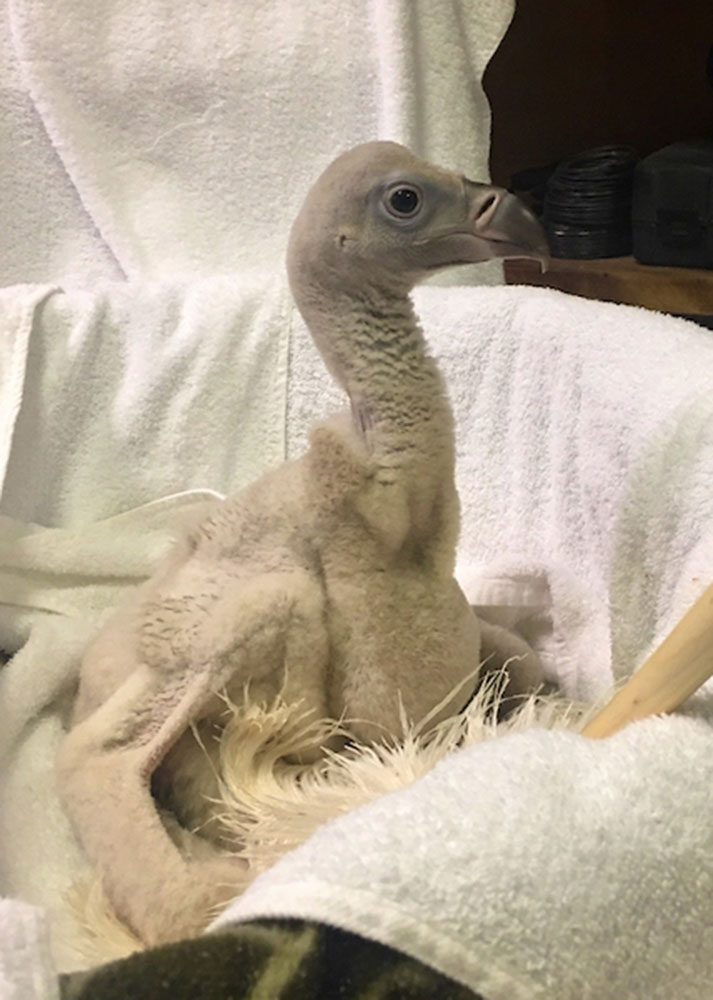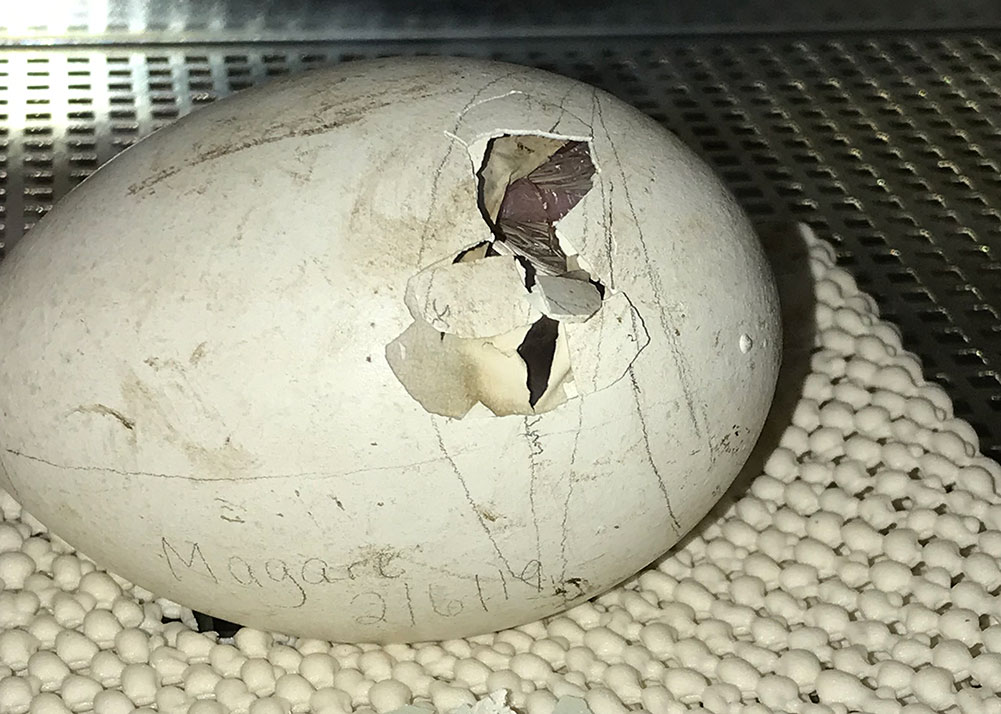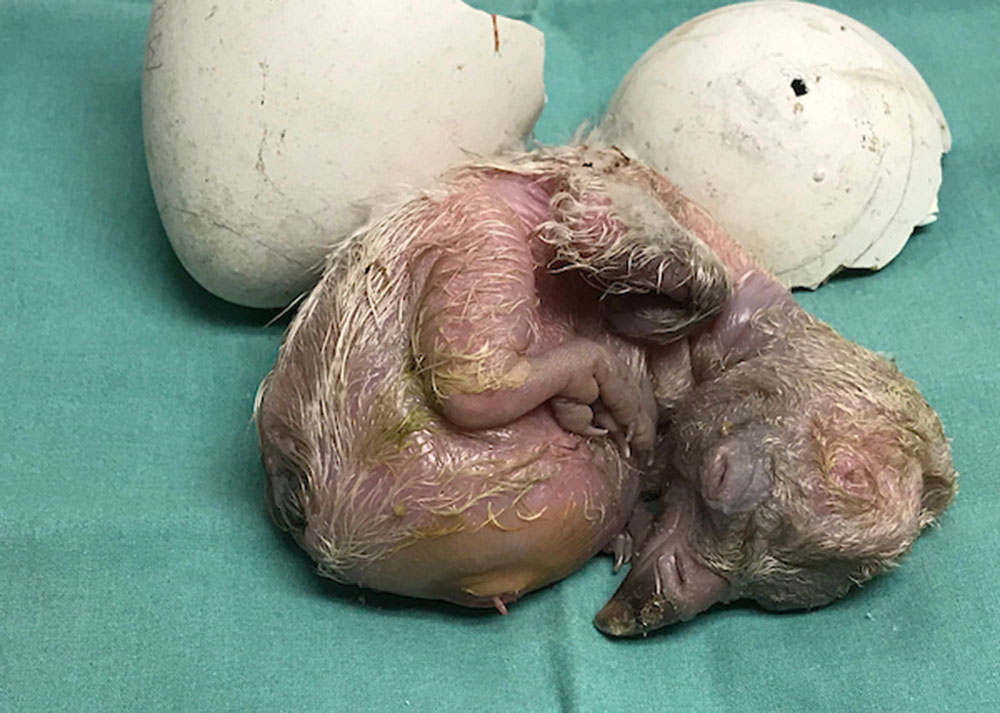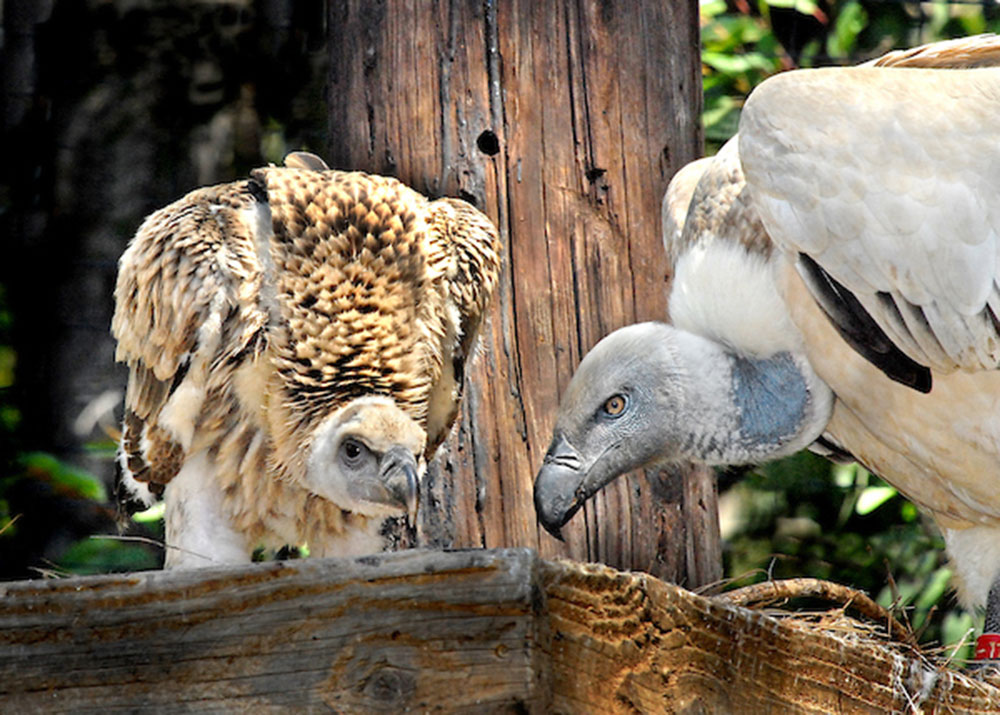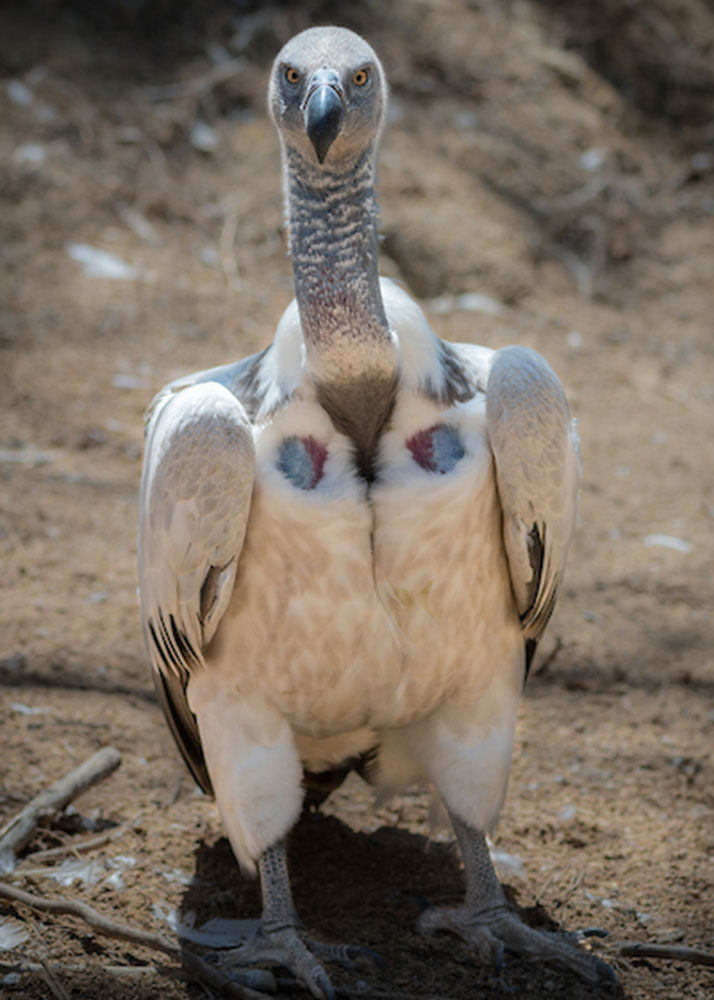Cape Crusaders

New in the Zoo
May 1, 2019
Zoo Update with Dawn Petersen-Amend
May 1, 2019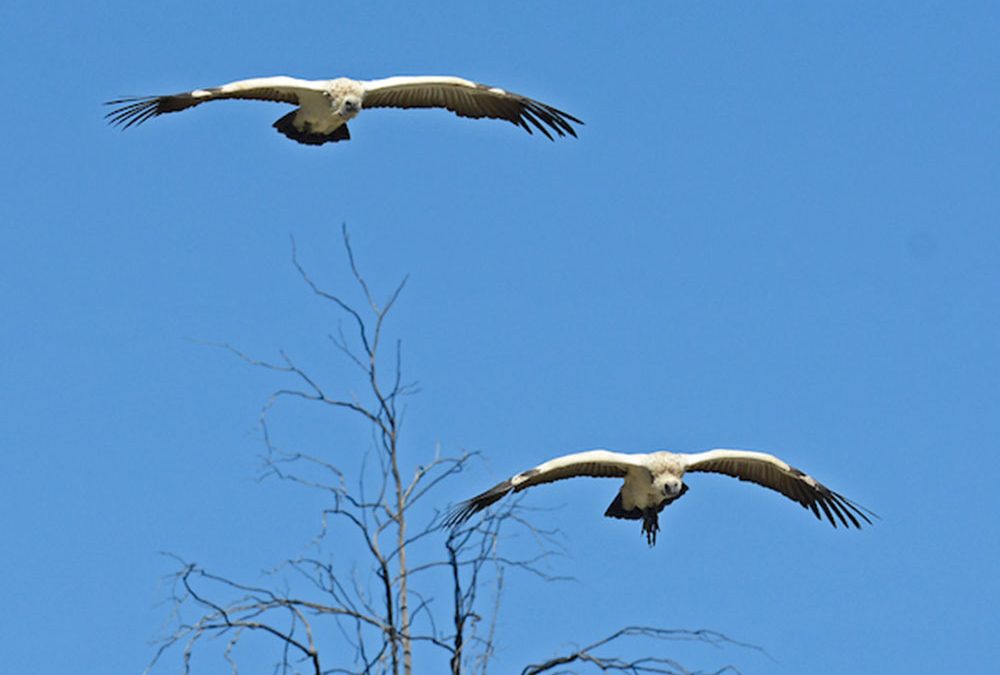
Weather permitting, you can see Cape vultures Thelma and Louise soaring high at the World of Birds Show. Photo by Tad Motoyama
By working collaboratively, zoos maximize their resources to maintain healthy populations of many species in human care. Thanks to the L.A. Zoo's expertise with vultures, Animal Care was able to assist colleagues at two other Association of Zoos and Aquariums (AZA) accredited facilities and increase the Zoo's Cape vulture flock by two. At the end of February, a young male Cape vulture transferred to L.A. from the San Diego Zoo Safari Park. The one-month-old chick, the first from a new breeding pair that recently settled in there, had some minor health issues. So, San Diego's animal care staff elected to hand rear him. L.A. Zoo staff agreed to finish raising him and he will eventually join the Zoo's breeding program.
On March 26, a Cape vulture egg arrived from the Saint Augustine Alligator Farm and Zoo in Florida. "St. Augustine has a breeding trio (one male and two females) but only one nest, so the second egg they produce gets neglected," explains Curator of Birds Mike Maxcy. "They don't currently have the resources to hand raise a chick; this will be the third egg we have received from them in the last four years."
The Florida egg was delivered into the care of the L.A. Zoo's California condor staff, and it hatched about a week after they received it. The baby fed successfully within days and is doing well. Although hatching is often depicted in media as being quick and easy, breaking out of the shell is a lengthy process. The official start is when the chick internally "pips." If you have ever peeled hard-boiled eggs, you may have noticed a depression in the white part at the wide bottom end of the egg. That's created by a small pocket of air inside the shell. The first stage of hatching is when the chick breaks into this little air cell and starts breathing, getting its lungs working.
"Then about 12 to 24 hours later, the chick breaks a spot open in the shell past the internal pip (the external pip) and then usually rests for 18 to 48 hours before starting the next phase—rotation. The chick moves its body a little inside the egg (counter-clockwise if you are looking at the big end) and then breaks another spot in the shell continuing from the external opening," explains Condor Keeper Debbie Sears. "And so on, until it has rotated somewhere between 80 and 100 percent around the eggshell—like a can opener. At that point the chick can press up with its head and start to come out of the egg, just like opening the lid on a can. Then it pushes with its legs and out it comes. For this chick, it took roughly 68 hours (about three days) from internal pip to hatch."
Loud, consistent vocalizing is a sign that the baby bird is healthy. Turn on the video's sound to hear! Video courtesy of California Condor Staff
The L.A. Zoo has had a long history with these stunning raptors. The original breeding pair that had been on exhibit many years ago produced only one fledged chick. Then in 1996, more Capes were brought in, and the pairs were combined and housed in the current exhibit, located across from the South America picnic area and behind the Rainforest of the Americas exhibit. At that point the Zoo's California condor staff started taking care of the birds. From 1992 to 2017, some 27 Cape vultures hatched in Los Angeles. Plans are currently in the works to create a new exhibit for these birds elsewhere in the Zoo.
Baby birds grow very quickly. Turn on the video's sound to hear. Video courtesy of California Condor Staff
These majestic birds can reach up to 8.5 feet in wingspan and weigh up to 24 pounds. They are gregarious and nest in colonies. The species has always been limited to a small region in southern Africa, so the impact of habitat loss is even greater. Declining numbers of ungulates (hoofed animals) and the predators who prey on them mean less carrion for wild vultures to feed on, as do changing livestock practices that now require farmers to bury dead animals. Other threats include collisions with power lines and wind turbines; poachers sometimes deliberately poisoning them to prevent them from calling attention to illegal kills; and diclofenac, the veterinary anti-inflammatory drug that has caused Asian vulture populations to crash and is having the same effect in Africa.
For many years the Los Angeles Zoo was the only zoo in North America to house Cape vultures, but Albuquerque Biological Park signed on in 1996 with their first Cape vultures, including a bird that came from L.A. The Saint Augustine Alligator Farm and Zoo in Florida joined conservation efforts for this species in 2011. The AZA included African vultures in its Saving Animals From Extinction (S.A.F.E.) program, launched in 2015, and the L.A. Zoo supports AZA's official conservation partner in Africa, Raptors Botswana with funding through GLAZA's conservation fund.
“African and Asian vulture populations are plummeting out of control,” Curator of Birds Mike Maxcy explains. “The L.A. Zoo is proud to be one of the founding partners of AZA’s African Vulture S.AF.E. Program. The main goal of this action plan is to improve the population status of six species (Cape, hooded, white-backed, white-headed, lappet-faced, and Ruppell’s vultures) in at least 25 percent of their African range by 2020. Public awareness is critical in the success of this program, which is just one of the ways zoos can play an important role.”


